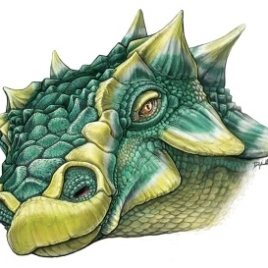Ankylosaurs were among the last non-avian dinosaurs; they walked on four legs and had wide armoured bodies and large horns. But much of what we know of ankylosaurs has been reconstructed from incomplete skeleton fragments. In a recently published paper, ROM researchers describe the most complete ankylosaur skeleton ever found in North America. The 75-million-year-old […]
Tag: dinosaur
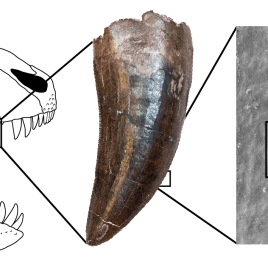
T. Rex’s secret weapon: Revealing a unique tooth structure
The unique tooth structure of carnivorous theropods such as Tyrannosaurus rex allowed them to tear through the flesh and bones of other dinosaurs with ease, and likely led to their success according to new research. The research team found that the deeply serrated structure, and the special arrangement of tissue inside, strengthened the teeth and […]
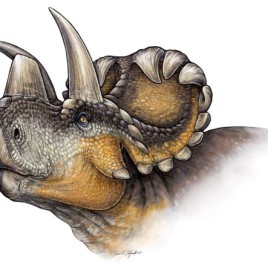
New species of horned dinosaur provides insight into Triceratops family evolution
A new species of horned dinosaur discovered in southern Alberta provides new information about the evolution of the Triceratops family of dinosaurs, the Ceratopsidae. The new species, Wendiceratops pinhornensis, is identified by 184 bones from at least four individuals. The Wendiceratop is an early species of horned dinosaur, living alongside the Albertaceratops, approximately 79 million […]
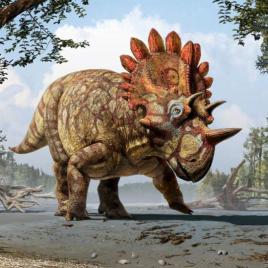
New species of horned dinosaur found in Alberta
Bones found 10 years ago along the Oldman River in Alberta belonged to a new species of horned dinosaur. This is the first time an horned dinosaurs species has been discovered in Alberta. According to a new study, this dinosaur is similar in many respects to Triceratops, except that its nose horn is taller and the […]
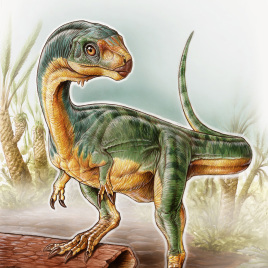
“Platypus” dinosaur discovered by seven-year-old boy
A new species of dinosaur seemingly made up of parts from other dinosaurs, similar to the modern day platypus, has been found by seven-year-old Diego Suárez in Chile. The species was named after Suárez, Chilesaurus diegosuarezi, and belongs to the theropod group of dinosaurs and is closely related to the Tyrannosaurus rex. However the Chilesaurus […]
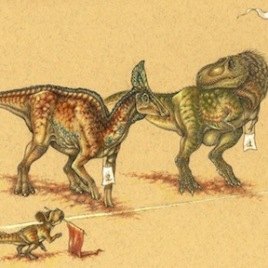
No sitting duck(bill) – how hadrosaurs won the “dino derby”
A new paper indicates that hadrosaurs – also known as duck-billed dinosaurs – were built for endurance rather than speed, and that this helped them avoid predators despite their lack of horns or armour. Computer analysis of leg bones showed that a critical muscle known as the caudofemoralis attached lower on the thigh in hadrosaurs […]
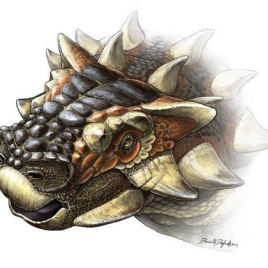
Mongolian fossil finds expand ankylosaur family tree
A new paper on ankylosaurs from Mongolia has named one new species and ‘resurrected’ another. The new species is Zaraapelta nomadis: ‘Zaraapelta’ is a combination of the Mongolian and Greek words for ‘hedgehog’ and ‘shield’ and refers to the elaborate pattern of bumps and grooves near the eye and a ridge along the back of […]
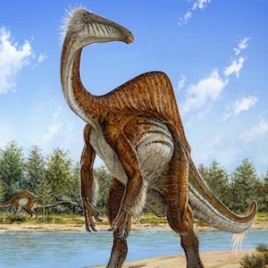
Largest ‘ostrich-like’ dinosaur may have been an omnivore
New fossils of a rare dinosaur found in Mongolia shed light on its dietary habits, and may indicate an omnivorous diet. Deinocheirus mirificus was previously known only from two large forelimbs found in the 1960s, and was thought to be the largest of the ornithomimids, a group of dinosaurs that superficially resemble modern ostriches. The […]
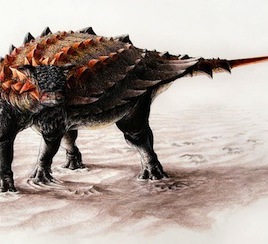
New “punk-rock” armoured dinosaur species described
Researchers have discovered a new species of ankylosaur in New Mexico that is related to others found in Alberta. The new species is called Ziapelta sanjuanensis and sports unusually tall spikes on the cervical half ring, a structure like a yoke of bone sitting over the neck, which looks a bit like a punk-rock collar. […]
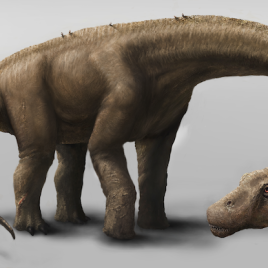
Colossal fossil: 26 meter dinosaur discovered
International scientists have found a new species of dinosaur in Argentina, named Dreadnoughtus, which may represent one of the most complete examples of gigantic titanosaurian sauropod dinosaurs ever discovered. It lived in the southern continents over 66 million years ago, and was one of the biggest creatures ever to walk the Earth. Dreadnoughtus was the most massive land […]
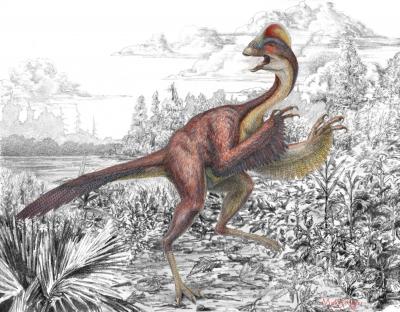
Discovery of new large feathered dinosaur in North America
A ten foot tall raptor, with a chicken-like head and possibly covered in feathers roamed North America 66 million years ago, says a new study. A team of scientists identified this new species, Anzu wyliei, from three partial fossils found in North and South Dakota. These fossils gave paleontologists a more detailed picture of North American […]
What colour were ancient reptiles?
To the chagrin of dinosaur fans everywhere, skin colour generally doesn’t survive fossilization. But a new analysis of fossilized skin from three ancient sea-going reptiles – an icthyosaur, a mosasaur and a sea turtle – may have changed that by providing strong chemical evidence of the pigment melanin. Interestingly, the icthyosaur appears to have been […]
